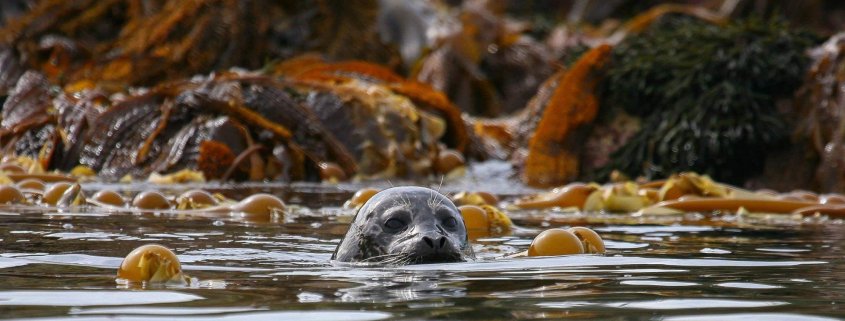
Throughout the Strait of Georgia, you can see seals hauled out on log booms. These provide artificial feeding platforms for the seals, as salmon, both as juveniles and later as adults, tend to hide under the log booms and are easily captured by the seals. Another benefit of log booms for seals is that they are not washed off during high tides – as they would be should they be on their usual rocky haulouts- and thus remain protected from transient killer whales that often prey on them.
The question PSF and others have been interested in addressing is “what role do log booms play in loss of salmon to seals?” The BC Conservation Foundation, University of Victoria and Cowichan Tribes have been carrying out a PSF-supported study in Cowichan Bay on the East Coast of Vancouver Island titled “Investigating Harbour Seal predation on Chinook salmon in relation to log boom use.”
- This study was initiated in summer 2019 to improve understanding of timing and location of returning adult Chinook mortality in Cowichan Bay and Cowichan River. A pilot PIT tag study in the Cowichan in 2017 had shown that high losses of adult Chinook were occurring in Cowichan Bay and lower river in the fall, likely as a result of seal predation. Log booms, which make ideal seal “feeding platforms” were present in 2017 when only 34% of the returning adults made it past the lower river. In 2019 log booms were absent in the estuary, while in 2020 they were again present, providing an ideal experimental opportunity to study this further.
- Although survival did improve in 2019 when log booms were absent (over 50% of adults made it through the lower river), in 2020 an additional confounding factor (unexpected high pulse of water out of the river, enabling adult fish to move into the river system more quickly) resulted in a lack of ability to draw full conclusions about the role that log booms play. The study has continued for a total of six years as of 2023.
- However, another major finding of this project is that high flows later in the season were correlated with faster upstream migration rates suggesting that Chinook can move out of vulnerable estuary and lower river locations more quickly when flows are higher, thus shortening the period of time that they are exposed to seals.
- Thus, there are two key levers mentioned here that impact survival of adult Chinook in this system: flow rates and presence/absence of log booms. We also know from SSMSP studies that flows were of key importance to survival of juvenile Chinook in this system, with much lower survival of Chinook smolts during low flows (up to 70% losses in river, before entry into saltwater) and that log booms likely are a similarly important feature for juvenile salmon predation risk by seals.
- However, an additional (as yet unmonitored factor) is that log booms provide refuge for harbour seals at high tides, when they would generally be washed off their usual rocky haulout habitats. There appear to have been recent increases in the sightings of transient killer whales in the Strait of Georgia, and seals lacking haulout habitat are vulnerable to predation by these whales.
Read the year 2024 six year summary report.
The presence of log booms also poses a number of additional environmental risks to the estuary and riverine habitats, including damage to benthic communities, clogging of eelgrass beds, increased hydrogen sulfide as a result of bark rotting underwater etc. Log booming also results in a huge amount of beach pollution with stray logs that clog beaches, making them inaccessible for forage fish spawning activity as well as leading to scouring of nearshore habitats and danger to boats/humans.
A second study that PSF is funding is to examine “tipping points” to restoration: namely, at what point has log storage in an estuary resulted in so much benthic damage that eelgrass restoration is no longer feasible? Researchers are partnering with SeaChange Marine Conservation Society to assess 10 different estuaries where eelgrass restoration has been carried out, with varying degrees of success. The value of the estuary to local communities and First Nations, and the log booming history and its spatial/temporal coverage are being assessed, and samples from the benthic environment are being collected to characterize the chemistry and biological communities so level of recovery can be assessed. Relating this information to the level of success of restoration programming will allow for evaluation of “tipping points” at which point the environmental damage is too great to allow for successful restoration.
What’s Next?
Next steps may include discussions with industry about potentially removing these log booms during critical salmon life history periods like during juvenile outmigration and adult return, and also addressing the negative impacts of wood waste on nearshore habitats, including destruction of eelgrass beds and smothering of benthic habitats, cluttering of beaches, scouring of nearshore habitats, loss of forage fish spawning habitat and risk to boaters. Learn more about another PSF-supported project studying the impact of log booms on eelgrass beds and their restoration.
PSF could lead a replicated study throughout the Strait of Georgia to assess how removal of log booms during juvenile outmigration and adult return affects survival of Pacific salmon. This project could focus on both seals and sealions. It could also involve an analysis of whether removal of log booms results in increased predation risk of seals by transient orcas.

